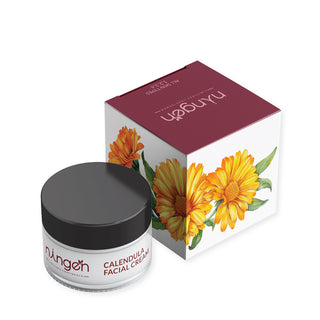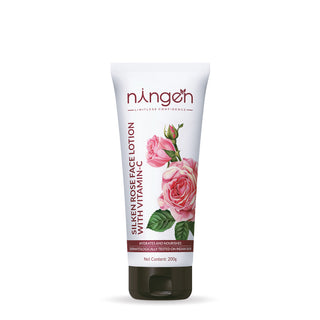Are you tired of dealing with dry, flaky skin that just won't go away no matter what moisturizer you use? Imagine having soft, smooth skin that feels hydrated and healthy all day long. With the right moisturizer, you can say goodbye to dryness and hello to radiant, glowing skin. Dry skin can be a frustrating and uncomfortable condition that affects millions of people worldwide. It can cause flakiness, itchiness, and even cracking, making it difficult to find a moisturizer that works. With so many options available, how do you know which moisturizer is best for dry skin?
Moisturizers are an essential part of any skincare routine, especially for those with dry skin. They help to hydrate and nourish the skin, keeping it soft and supple. However, not all moisturizers are created equal, and some may even exacerbate dryness.
What causes dry skin?
- Did you know that dry skin is caused by water or moisture escaping from the surface layers of the skin? This is also known as dehydrated skin or medically as xerosis. When this happens, water escapes from the skin into the dry air, leaving your skin feeling dry, flaky, tight, and itchy. Dehydrated skin can also make those pesky aging symptoms look even worse!Anupama Yadavdr Gradually, your skin can develop cracks and fissures in the surface, which can be painful and unsightly. So, make sure to keep your skin hydrated to avoid inflammation and redness.
- When your skin is lacking moisture, it can form fine lines and look rough or flaky. Wrinkles can become more obvious and your skin can even start to look dull and gray. This is because the surface cells are deflated and lacking water, which normally keeps your skin smooth and supple. So, make sure to keep your skin hydrated to keep those aging symptoms at bay!
Here are the factors associated with dry skin;
- When your skin lacks natural sebum protection, it makes it easier for water to escape. That's because there's no protective layer of sebum on the surface of your skin to shield against water evaporation. So, make sure to keep your skin hydrated and moisturized to prevent this from happening.
- Lack of lipids between the cells in your skin's outer layer makes your skin dry and rough. When there are gaps in this protective barrier, moisture can escape from deeper layers of the skin, leaving it feeling parched. So, if you want to keep your skin looking and feeling healthy, it's important to take care of its natural protective barrier.
- Your skin can easily become dehydrated if not properly protected or moisturized. And it's not just external factors that can cause this, other things like your diet and lifestyle can also play a part. So make sure to take care of your skin and keep it hydrated for that healthy, glowing look!
- Over-washing can strip away the protective sebum on your skin or even start removing the lipids between the cells that act as a barrier. This is especially concerning if you already have dry skin. So, be sure to give your skin a break and don't wash it too frequently!
- Low humidity creates a demand for more moisture in the air. Unprotected skin easily loses water by osmosis to the air.
- Poor health and medication side effects can also contribute to skin dryness.
How are emollient ingredients effective in the treatment of dry skin?
- When your skin lacks natural oils, it needs protection. Emollients like petrolatum and mineral oil do the job, allowing your skin to rebuild its natural barrier function over time. For extra protection, try natural oils like jojoba or sunflower seed oil. They contain fatty minerals that keep your skin healthy. If your skin is dehydrated, humectants like Sodium PCA, Glycerin, and Sodium Hyaluronate can help. They attract water and bind it to your skin, while emollients keep it from escaping.
- Choose a moisturizer that is specifically formulated to address your needs. With so many options available, it can be overwhelming to choose the right one.When looking for a moisturizer for dry skin, it's important to consider certain qualities that can help to hydrate and nourish the skin. Choosing the best moisturizer for dry skin is like finding the right key to unlock a door. It takes some trial and error, but when you find the right match, your skin will feel nourished and rejuvenated.
Key qualities to look for in a moisturizer for dry skin;
-
Rich texture
A moisturizer with a rich, creamy texture can help to deeply moisturize and nourish dry skin. Look for moisturizers that are thick and emollient, as these can help to seal in moisture and prevent water loss from the skin. Creams and balms are good options for dry skin, as they tend to have a higher oil content than lotions, which can be too light for very dry skin.
-
Hydrating ingredients
Hydrating ingredients are essential for moisturizing dry skin. Look for moisturizers that contain ingredients like hyaluronic acid, glycerin, or which can help to attract and lock in moisture. Hyaluronic acid is a popular ingredient in moisturizers, as it can hold up to 1,000 times its weight in water, helping to plump and hydrate the skin. Glycerin is another effective humectant that can help to draw moisture into the skin, while urea is a natural moisturizing factor that can help to hydrate and soften the skin.
-
Nourishing oils
Moisturizers that contain nourishing oils can help to moisturize and soften dry skin. Look for moisturizers that contain oils like coconut oil, jojoba oil, or argan oil, which can help to soothe and nourish the skin. Coconut oil is particularly beneficial for dry skin, as it contains medium-chain fatty acids that can help to strengthen the skin barrier and prevent moisture loss. Jojoba oil is a lightweight oil that is easily absorbed by the skin, making it an excellent choice for those with dry, flaky skin. Argan oil is rich in vitamin E and essential fatty acids, making it a great moisturizer for dry, aging skin.
-
Barrier repair ingredients
Dry skin is often caused by a weakened skin barrier, which can allow moisture to escape from the skin. Moisturizers that contain barrier repair ingredients can help to strengthen the skin barrier and prevent moisture loss. Look for moisturizers that contain ingredients like ceramides, niacinamide, or fatty acids, which can help to restore the skin's natural barrier. Ceramides are lipids that are naturally found in the skin, and they help to keep the skin hydrated and protected. Niacinamide is a form of vitamin B3 that can help to improve the skin's barrier function, while fatty acids like linoleic acid can help to improve the skin's texture and reduce dryness.
-
Fragrance-free
Fragrances can irritate dry skin, so it's best to look for fragrance-free moisturizers if you have dry, sensitive skin. Fragrances can cause inflammation and irritation, which can exacerbate dryness and make the skin more sensitive. Look for moisturizers that are labeled as fragrance-free or unscented, as these are less likely to cause irritation.
Ningen Daisy Face Cream is best for dry skin
Ningen offers the perfect solution for individuals with dry skin by providing a range of high-quality moisturizers that are specifically formulated to deeply hydrate and nourish the skin. Ningen Daisy Face Cream (Brightening, Fairness) is powered with Vitamin-C, Daisy and Plum extracts, to magnify your skin with a radiance never experienced before. Bring revolution in your skin care routine with the richness of flowers, fruits and plant extract.
All these components are well-known moisturizers and emulsifiers which support natural collagen production in the dermis to increase skin elasticity. The powerful botanicals protect your skin against environmental toxins while reducing inflammation in the surface layer of your skin.
In conclusion, when looking for a moisturizer for dry skin, it's important to consider certain qualities that can help to hydrate and nourish the skin. Look for moisturizers that have a rich texture, hydrating ingredients like hyaluronic acid or glycerin, nourishing oils like coconut oil or argan oil, barrier repair ingredients like ceramides or niacinamide, and are fragrance-free. By choosing a moisturizer that meets these criteria, you can help to alleviate dryness and keep your skin looking healthy.










